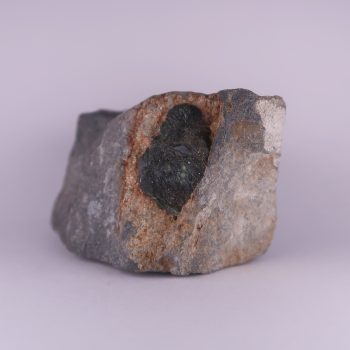Libethenite
Libethenite is a strikingly beautiful secondary copper phosphate mineral, often recognized by its deep green to olive-green crystals.
Showing the single result
Information about Libethenite
A striking, green secondary mineral in the oxidised zones of copper deposits, which occurs alongside other copper minerals including malachite, pseudomalachite, azurite, and chrysocolla.
Uses and History
Primarily Libethenite is valued as a mineral collectors specimen; it is not especially common and as such doesn’t tend to be exploited as a copper ore.
Named in 1823 by August Breithaupt after the type locality Ľubietová in Slovakia (formerly Hungary). In German, this locality was called Libethen.
Mineralogy
Light to dark green, olive green, black green, black.
Hazards and Warnings
Mineral collectors should wash their hands after handling specimens, to avoid any exposure to potential toxins.
Almost all rocks, minerals (and, frankly, almost all other substances on earth) can produce toxic dust when cutting, which can cause serious respiratory conditions including silicosis.
When cutting or polishing rocks, minerals, shells, etc, all work should be done wet to minimise the dust, and a suitable respirator or extraction system should be used.
Translations
Arabic:
Hindi:
Portuguese:
Bengali:
Indonesian:
Punjabi:
English:
- libethenite
Italian:
Russian:
- Либетенит
French:
- Libéthénite
Japanese:
- リベセナイト
Spanish:
- Libethenita
German:
- Libethenit
Korean:
Thai:
Gujurati:
Mandarin Chinese:
Urdu:

